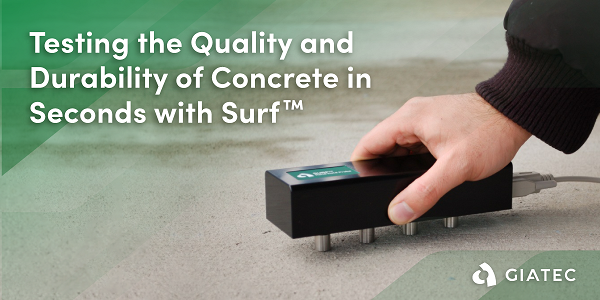 Friday, April 26, 2024
Friday, April 26, 2024  Friday, April 26, 2024
Friday, April 26, 2024 
As the demand for new concrete structures continues to boom, better and more efficient ways to test the quality and durability of concrete are needed. Multiple tests for obtaining and understanding concrete durability by measuring its ability to resist chloride penetration have widely become accepted. This method, commonly known as RCPT (rapid chloride permeability test), measures chloride penetration on a range from high to negligible and is standardized by ASTM C1202: Standard Test Method for Electrical Indication of Concrete’s Ability to Resist Chloride Ion Penetration. This test is especially important for DOT’s when bridges and highways are undergoing construction, as well as for monitoring existing structures to determine and prevent deterioration of concrete and rebar corrosion due to chloride penetration.
Unfortunately, not only is the RCPT approach labor intensive, it is also time-consuming, as the test itself takes 6 hours to complete and requires extensive sample preparation. This includes cutting and conditioning the samples into a desiccator for 3 hours and letting the specimens soak with water for 18 hours prior to the test, and even more steps. Moreover, this test method is often very expensive due to the amount of work required to perform the analysis.
A much faster and less expensive method for determining the quality and durability of concrete is electrical resistivity. Electrical resistivity has been used to measure the quality of concrete since the early 1910s, but in recent years state of the art devices have been developed to improve this measurement process. This method assesses the ability of concrete to resist a chloride passage by measuring the concrete’s resistance to the flow of electrical current. As a result, it evaluates the quality control and service life prediction of concrete.
Electrical resistivity testing can be used to:
Keep reading this blog on Giatec.ca
Construction Links Network – the peer-to-peer content sharing platform for the construction, building and design community